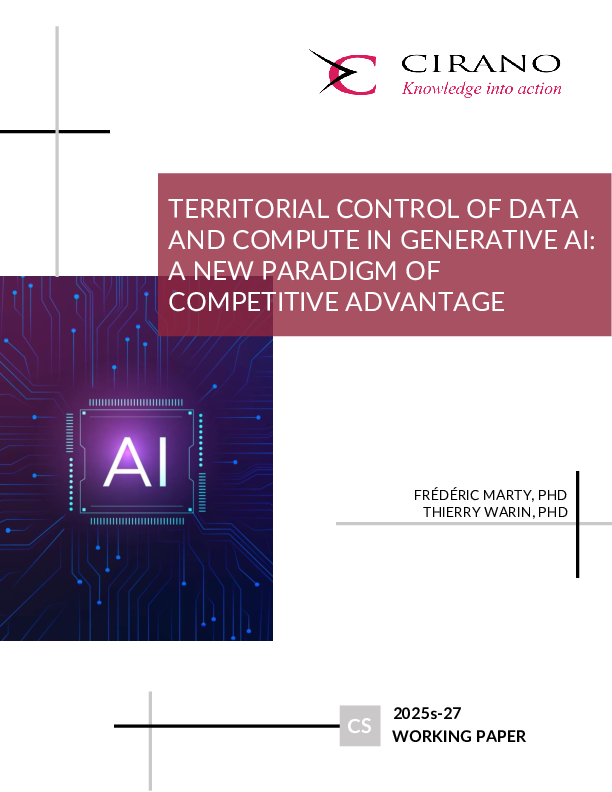Vers une meilleure compréhension de la transformation numérique optimisée par l’IA et de ses implications pour les PME manufacturières au Canada - Une recherche qualitative exploratoire
This report presents the main results of the qualitative and exploratory study aimed at explaining how artificial intelligence (AI), as general-purpose technology (GPT), impacts firm-level productivity and employment. Analyzing primary and secondary data sources (including 27 interviews, reports, and panel discussions), we first develop the maturity spectrum of AI adoption and classify small and medium-sized enterprises (SMEs) that integrate AI into their work processes into four archetypes: The Wishful, The Achievers, The Leaders, and The Visionaries. By characterizing each archetype, we highlight nuances of changes that need to take place for a firm to further progress to the next stage of AI adoption. Second, we identify and explain seven barriers that are associated with the pervasive integration of AI among SMEs in manufacturing industries. Third, in three distinct case studies, we explore three AI projects conducted by Quebec-based AI-focused firms to show how machine learning (ML) integration into products and work processes can act as a productivity enhancer and identify its impact on firm-level employment. Overall, our results suggest that successful AI integration requires a firm-level digital transformation which we illustrate as a continuum. In the early stages of adoption (including firms in The Wishful and The Achievers classes) where AI adoption is project-centric, firms’ employment tends to increase in parallel with productivity gains. The much-needed upskilling of the existing workforce also occurs at the same time. Further, as firms integrate AI on an enterprise-wide scale (The Leaders and The Visionaries) and increase the level of their innovation activities, firm-level job losses are experienced in parallel to productivity gains. Next, we introduce indirect indicators of AI pervasiveness as more realistic measures to evaluate the rate of AI adoption by SMEs in a fluid stage. Finally, we propose four recommendations that have implications for researchers, practitioners as well as policymakers.




